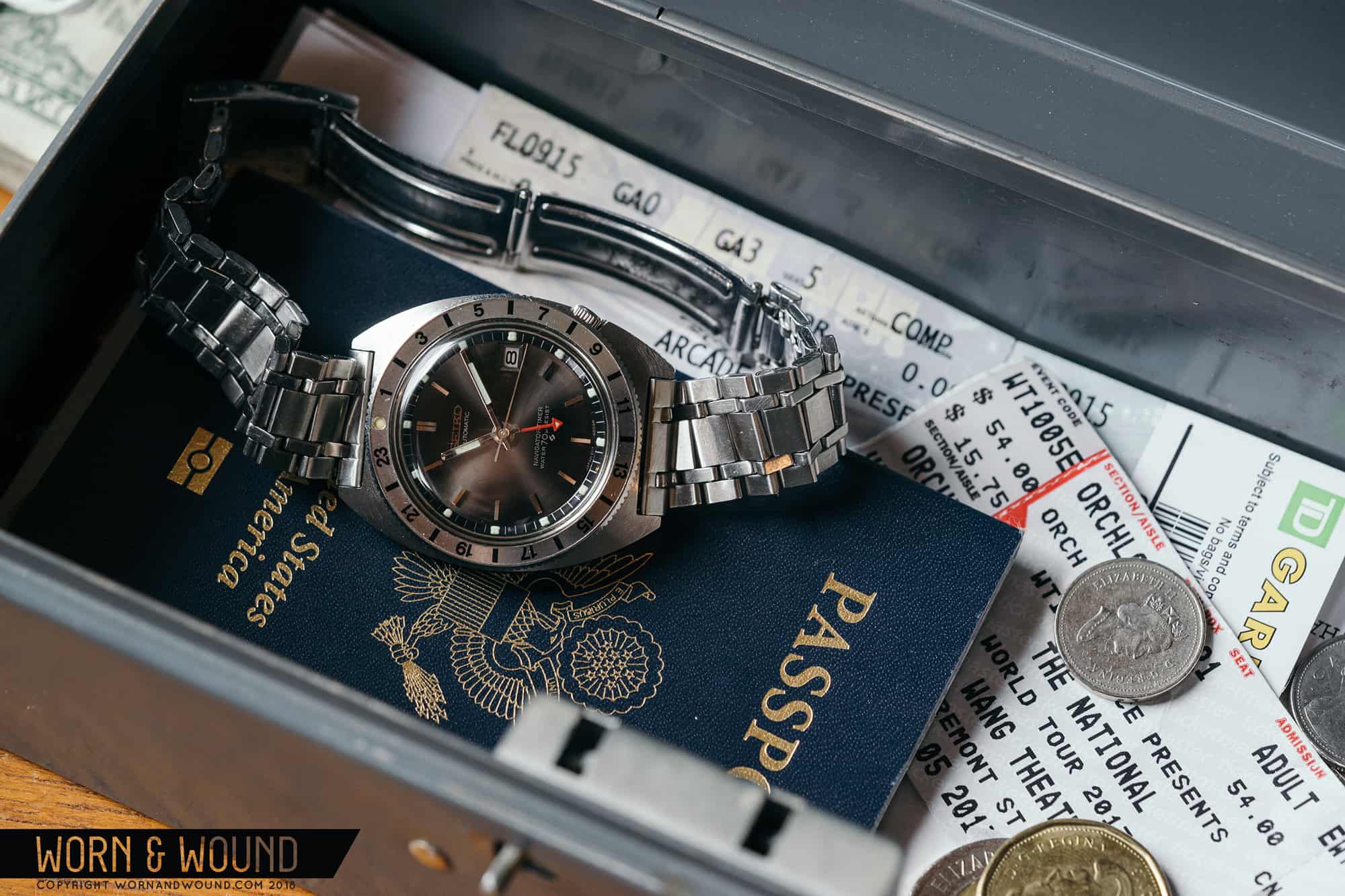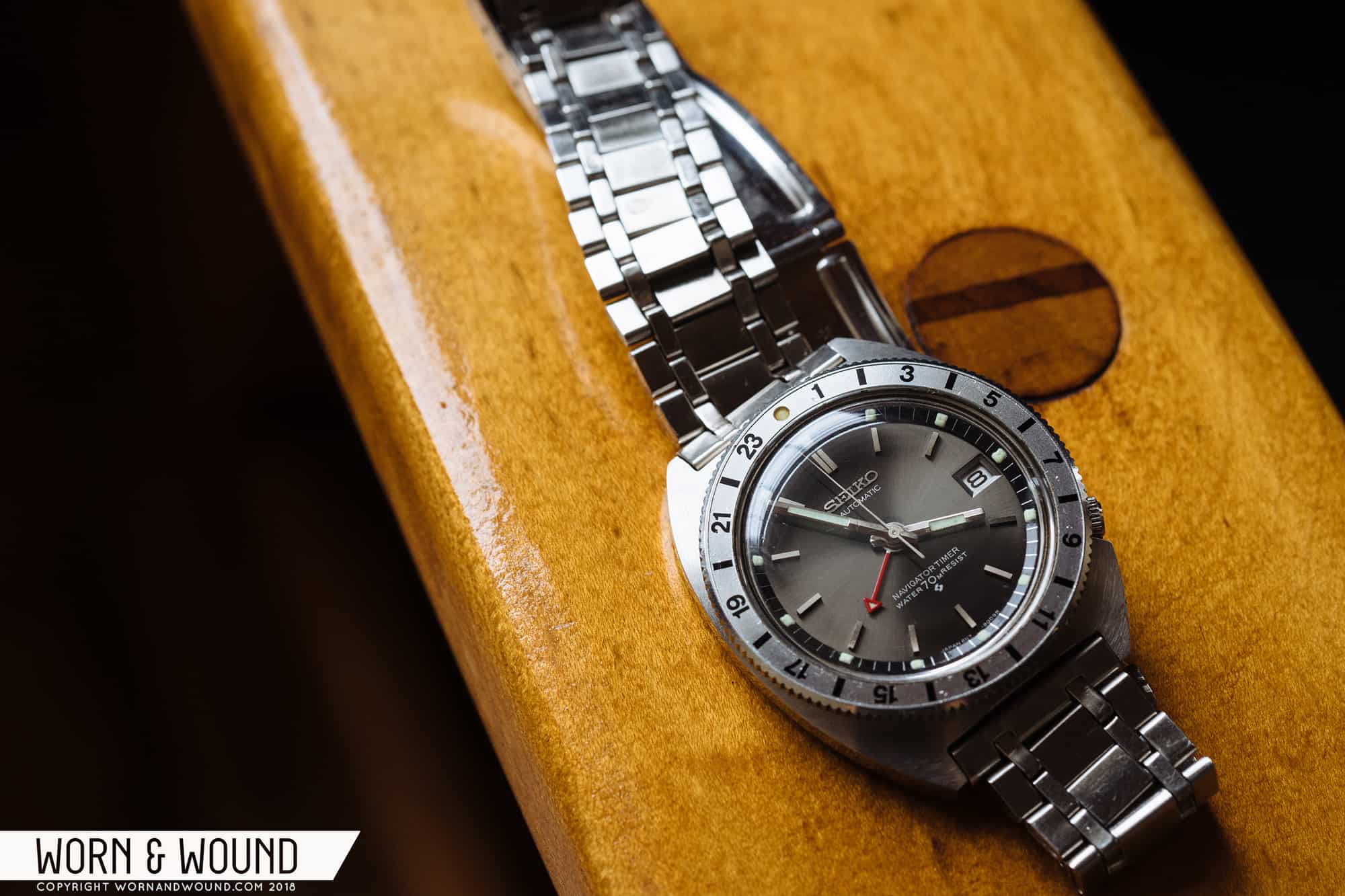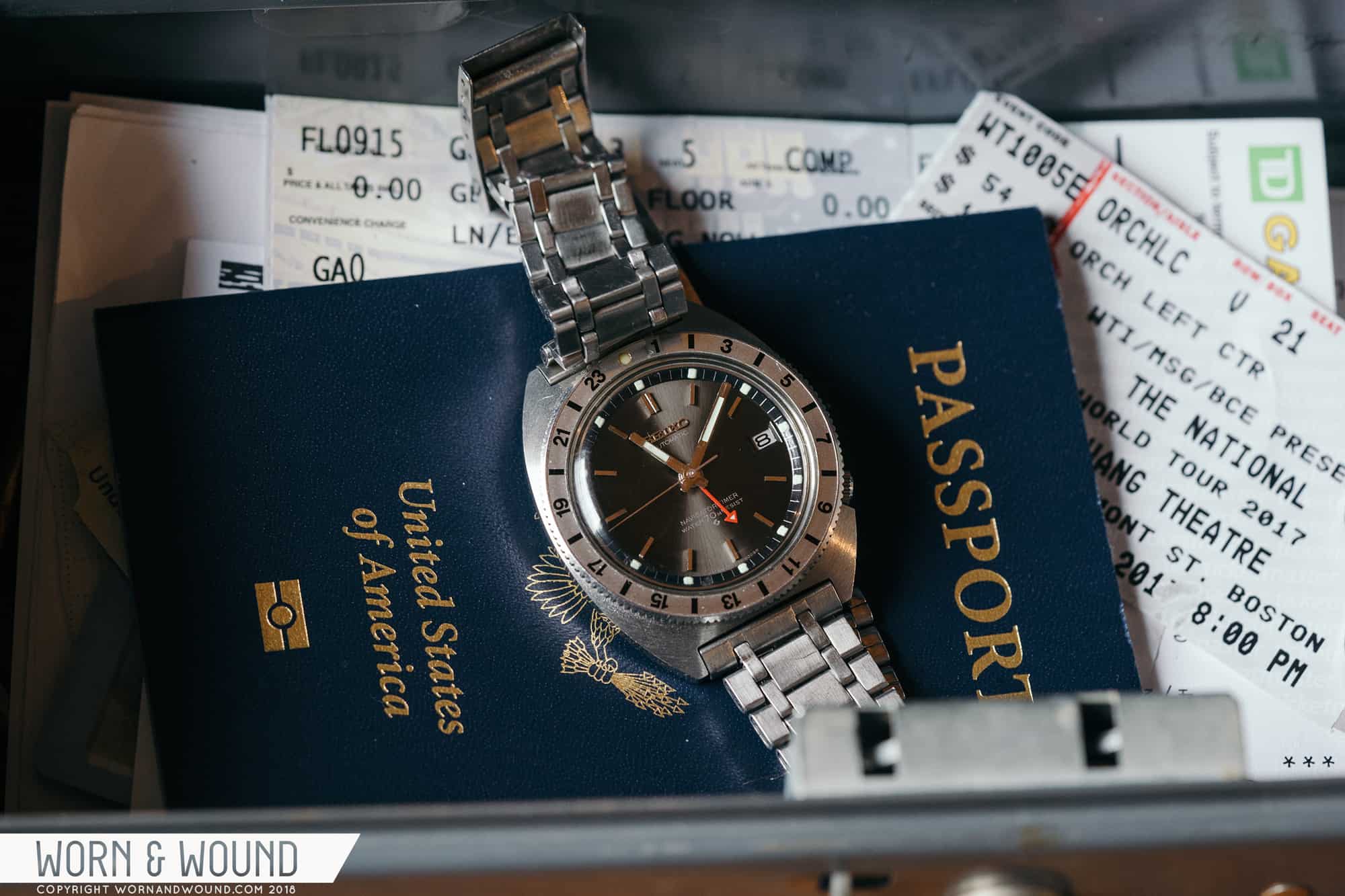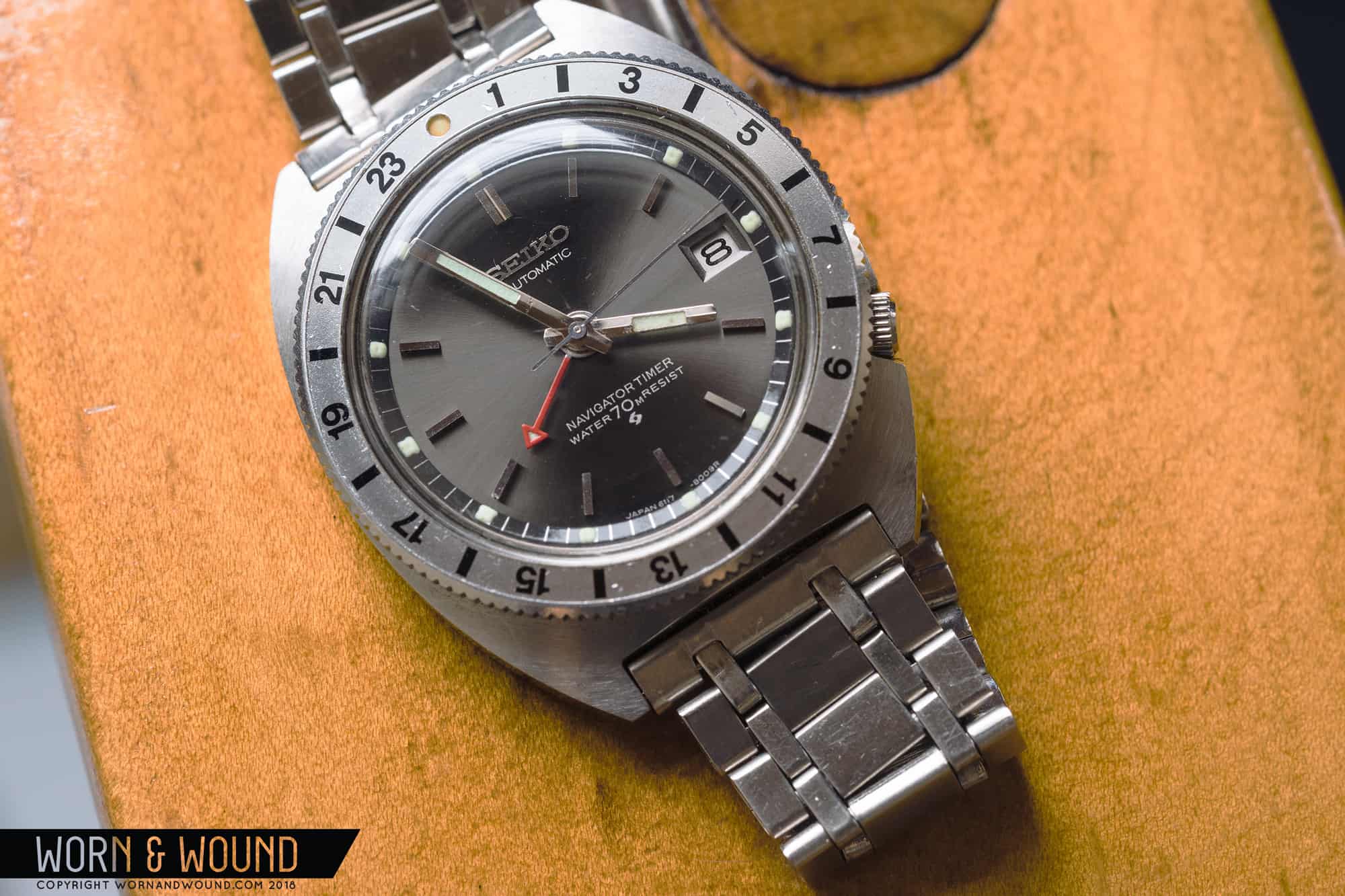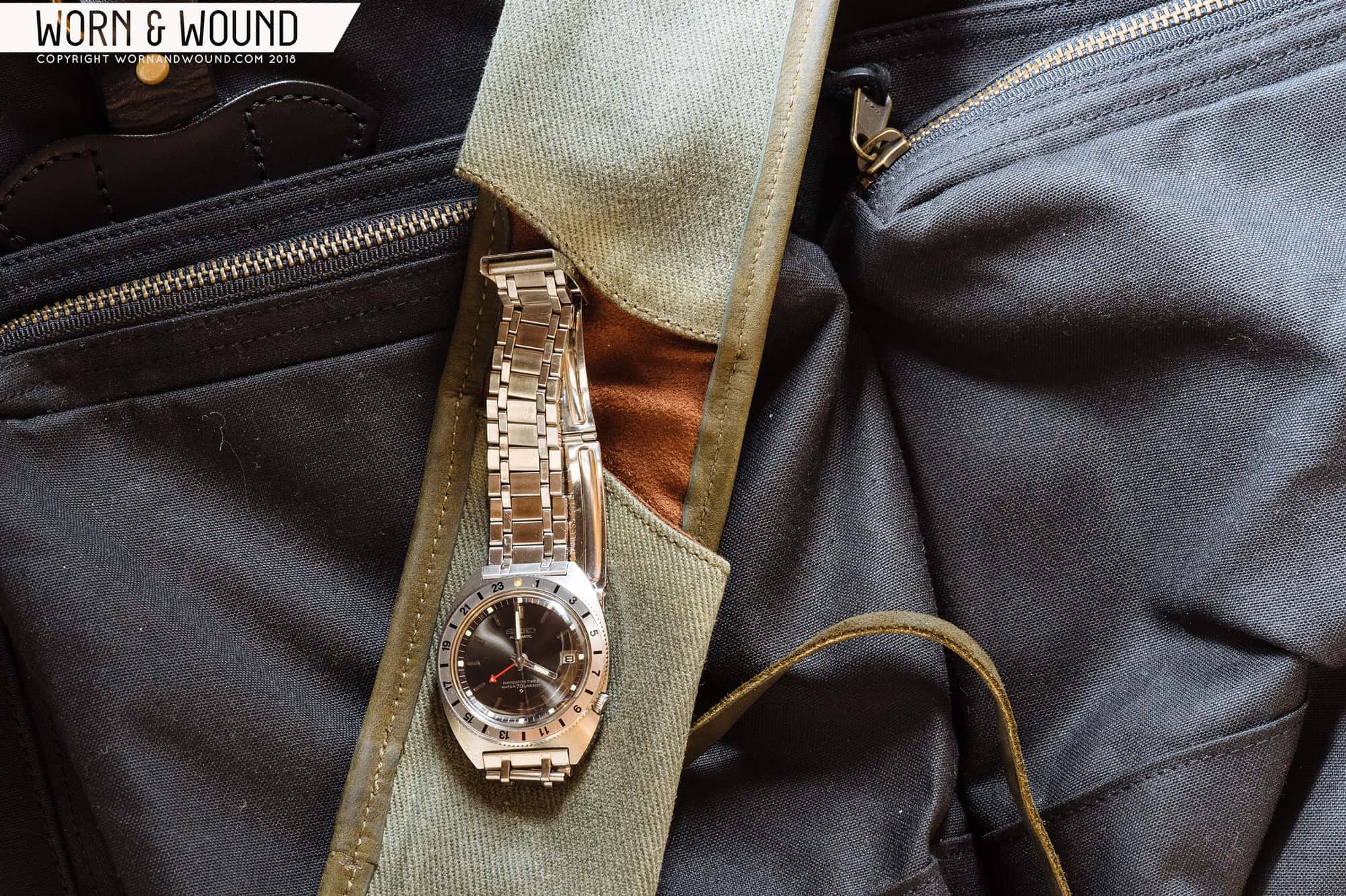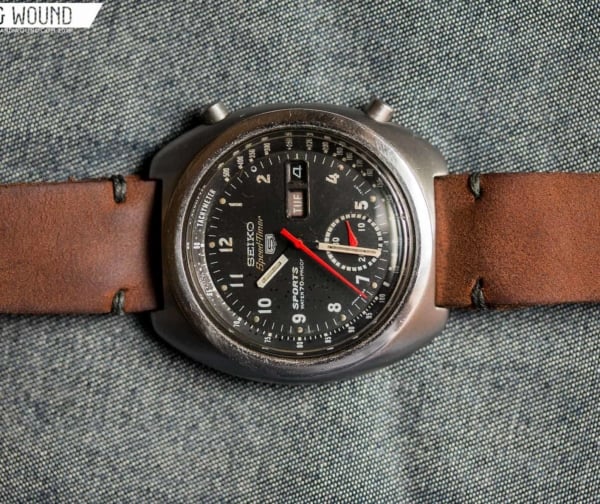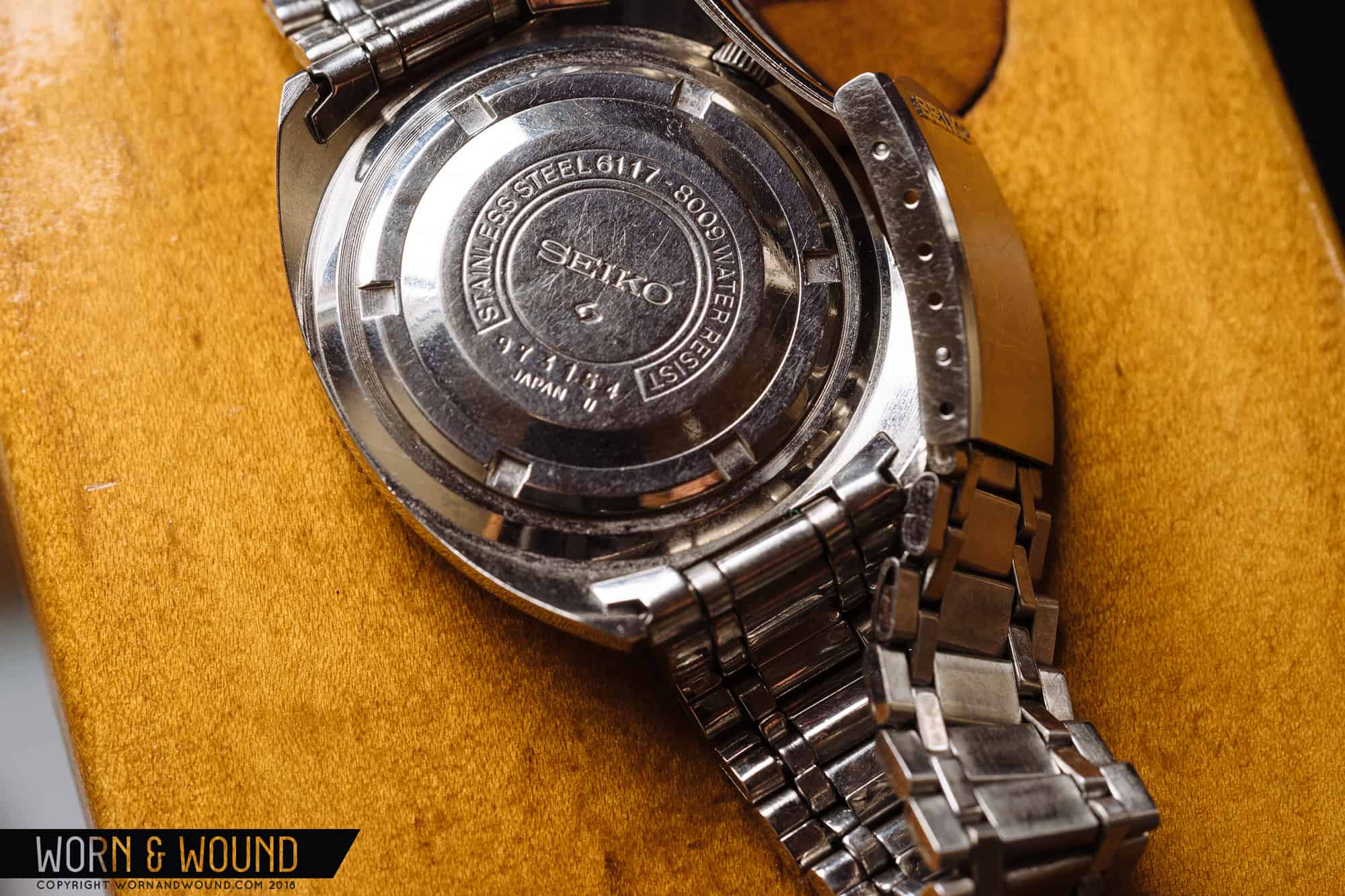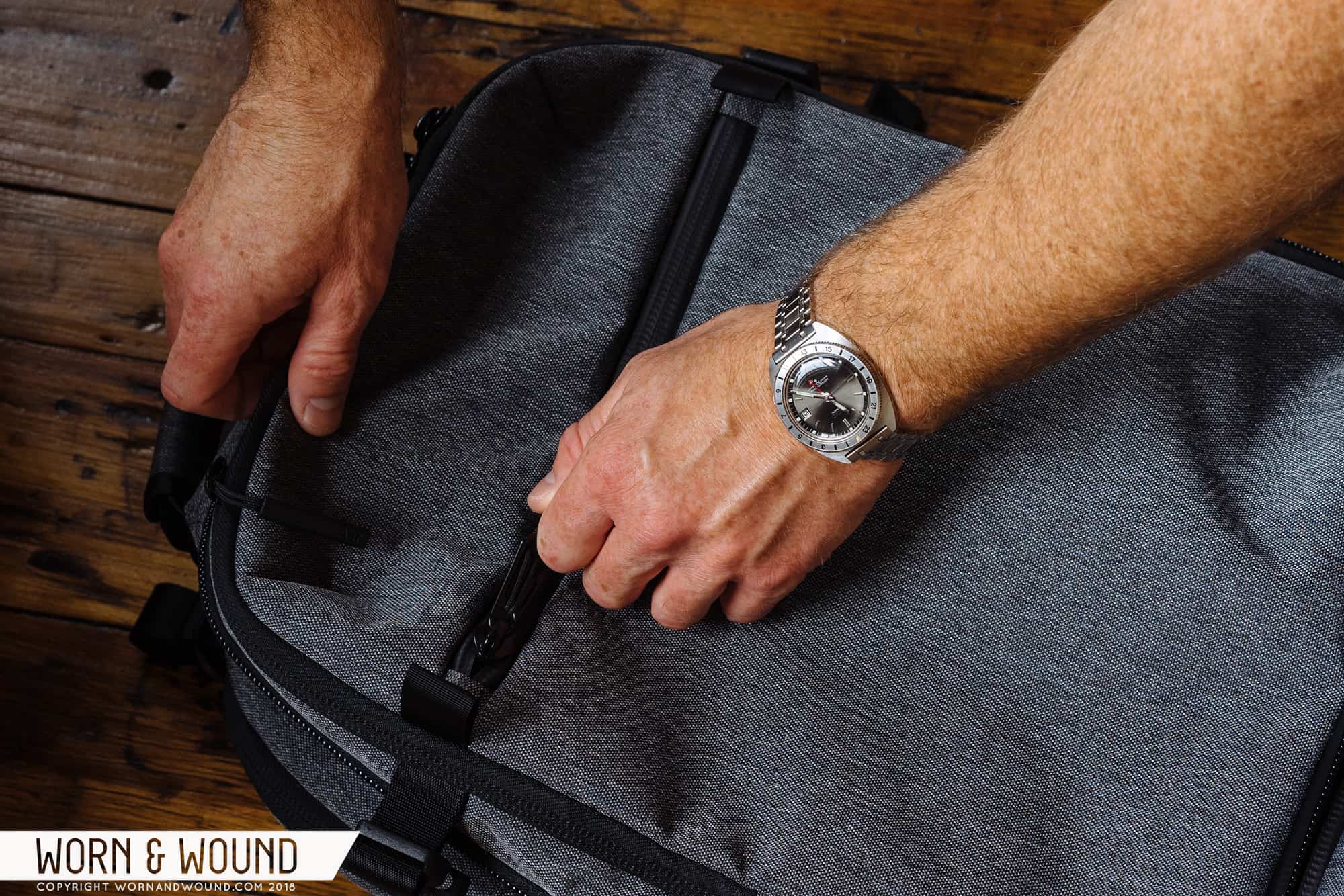The Seiko 6117-8000 came into my collection as a fallback of sorts—a stand in watch for another piece that had been traded away (a Seiko 6105-8000 as it happens). I’d swapped the 6105 in pursuit of a modern dive watch that I could wear more actively day-to-day without worry. I’d loved wearing the watch, and the tonneau-style case was among the most comfortable I’d ever worn. My intent was always to pick up another 6105 in the future, but when it came time that I started poking around for a 6105 I was shocked to see that the market price had nearly tripled from what I’d paid for mine. I wanted to get a Seiko back in my stable, but I didn’t want to shell out the new premium. And so the search began.
Tonneau-cased divers, specifically those from Seiko, were my target. Seiko produced “professional” 150-meter rated dive watches like the 6105-8000 and 6105-8009. Alongside those, Seiko also produced very similar looking 70-meter rated watches that were for the more casual enthusiast. The latter are often far more accessibly priced, even today. That’s where I focused my efforts.
Vintage Seiko is an exercise in variance; there are often numerous options when it comes to colors, fonts, bezels, case finishes, and so on. Within the same movement and case families, Seiko often offered a prolific number of iterations not to be matched by any other brand. As a result, trying to narrow in on a reference of the “70m” designs that I liked was challenging, and it led to a number of deep dives on eBay. On one of those scrolling searches, I found the Navigator Timer 6117-8000.









 Featured Videos
Featured Videos




